- Administrator
- Albums and Singles
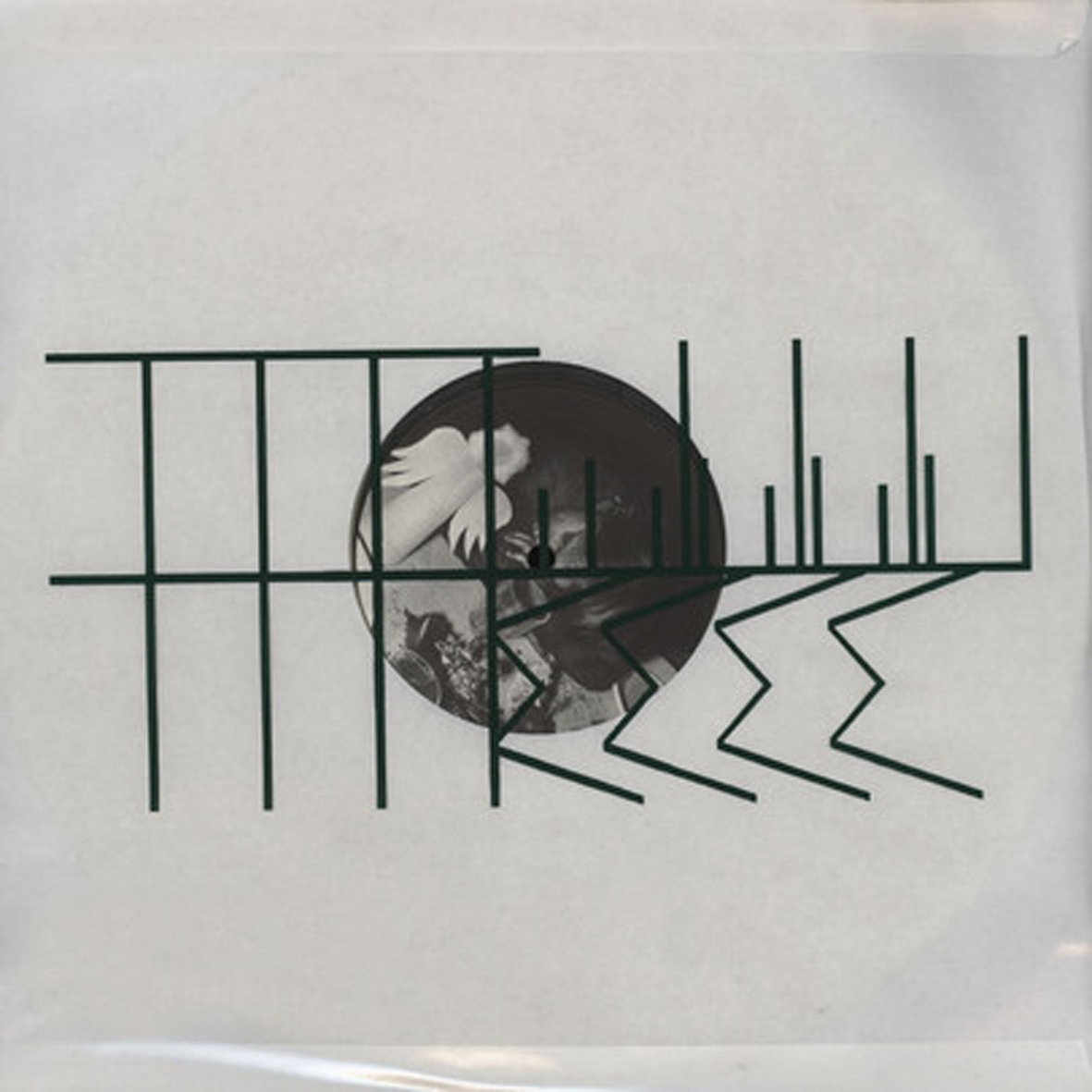 Although I have only been following Luke Younger's career for a few short years, one thing is very clear to me: he definitely does not like to repeat himself.  Curiously, however, that creative restlessness is not channeled into any sort of recognizably linear evolution; rather, each new Helm release seems to be a self-contained experiment or reinvention.  In keeping with that theme, these latest two EPs take divergent paths and succeed in divergent ways, though Silencer is definitely the superior one.
Although I have only been following Luke Younger's career for a few short years, one thing is very clear to me: he definitely does not like to repeat himself.  Curiously, however, that creative restlessness is not channeled into any sort of recognizably linear evolution; rather, each new Helm release seems to be a self-contained experiment or reinvention.  In keeping with that theme, these latest two EPs take divergent paths and succeed in divergent ways, though Silencer is definitely the superior one.
To his credit, Younger is one of the few prominent noise artists who has yet to jump on the techno bandwagon (though there probably is not any room left on it at this point anyway).  Silencer is still an atypically beat-driven effort however–it is just that the rolling, lurching tom-tom beat of the title piece sounds far more indebted to Les Baxter than to anything currently coming out of Bristol or Berlin.  The sizzling blurts, insectoid clicks, electronic squiggles, and grinding metallic shimmer are all very much in the restrained noise/musique concrète vein, but it is easy to picture Luke turning knobs and pressing buttons in the shadow of a volcano while surrounded by tiki torches and a spirited limbo contest.  The closing "The Haze" treads somewhat similar territory, though the groove is a bit more sultry and the noises more in the "giant robotic crickets or an amplified lawn sprinkler" vein.
The remaining two pieces, "Mirrored Palms" and "Bergamo," are quite a bit different.  The superior one is the beatless "Palms," which might secretly be the best piece on the EP, evoking a hallucinatory atmosphere of escalating dread worthy of Angelo Badalamenti's best soundtrack work for David Lynch.  "Bergamo," on the other hand, approximates being trapped in a dripping, slowly flooding cave beneath some giant, pounding machinery.
Even though all of the individual pieces are strong, however, I was left with a nagging feeling of not being quite satisfied.  The reasons for that feel somewhat contradictory and vague, but I think my main problem is that the 10-minute "Silencer" is not quite compelling enough to justify its length, while the EP as a whole is too short and varied to get fully absorbed in.  Regardless, Silencer is probably still a great introduction for anyone new to Younger, as it is atypically rhythmic and distinctive, though I personally get a lot more out of his full-lengths.
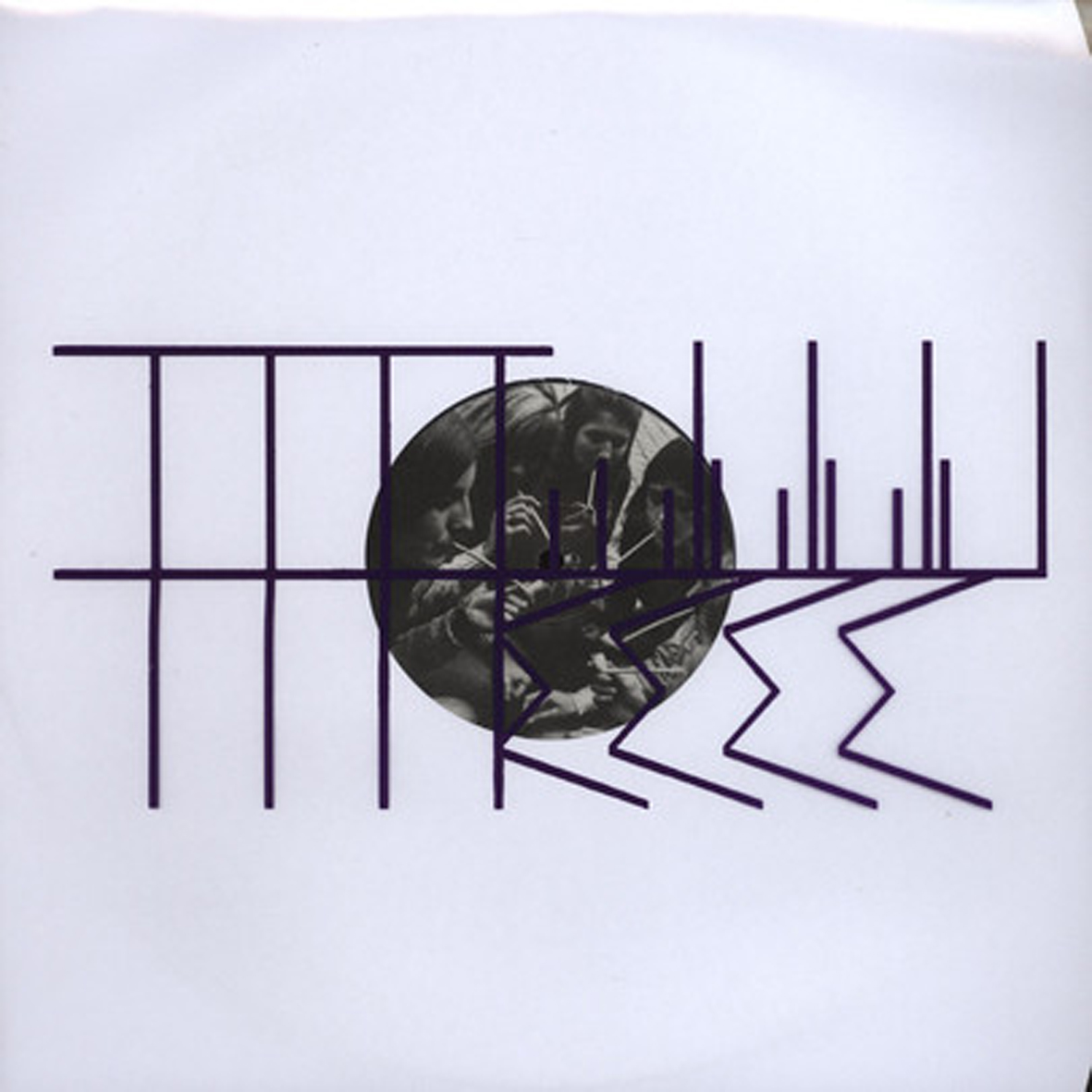
Curiously, The Hollow Organ single/EP does not begin with "The Hollow Organ," nor is the title track unquestionably the stand-out song.  Rather, it opens with a very cool 3-minute piece called "Carrier," which combines a hollow thrum, a buried dancefloor throb, harsh scraping and grinding, and sprays of noise that resemble showers of sparks from a broken power line. Then it abruptly transforms into a coda of subterranean burbling and a wildly panning and quavering animal-like whine.  After that brief and wonderful opening, unfortunately, Younger's inspiration seems to have dissipated a bit.
The remaining three songs are mostly just texture-based soundscapes without any sort of serious melodic/rhythmic activity or significant compositional arc.  They are not bad or anything, but I feel like Luke is basically just treading water for the next 22 minutes.  Each piece certainly sounds vibrant and multilayered though, particularly "Analogues," which gradually drifts from heavy metallic grinding to a deep, forlorn crackle that sounds like the slow burning of an ancient forest.  "Spiteful Jester," on the other hand, is a miasma of distressed and empty-sounding industrial blurts and an unrelenting whine.  The fun then finally winds down with the 10-minute closing title piece, which is a slowly pulsing and ominous bit of menacing ambience that calls to mind an abandoned, windswept shipyard in the dead of night.
I think Luke succeeded at what he was going for with The Hollow Organ, which is mostly some sort of machine noise-damaged dark ambient, a soundtrack for a non-existent film (complete with sinister pipe organ finale), or a suite of nightmarish faux field recordings, but it ultimately did not make a strong impression on me.  That might be attributable to how permanently burned-out I am these days on anything resembling dark ambient though, which is certainly not Younger's fault.  Or it might just be that this EP was too brief for me to get fully immersed in Luke's brooding horror-scape.  Or that I wished the simmering moodiness would eventually erupt in some kind of crescendo, which it never does.  In any case, I am sure that Helm fans looking for a good headphone mini-album full of sharply realized, vibrant, and hallucinatory textures to tide them over until the next album will find that Organ satiates that need nicely.  To my ears, this definitely feels like a fairly minor addition to Younger's oeuvre, but it is admittedly good for what it is.
 
Read More
- Administrator
- Albums and Singles
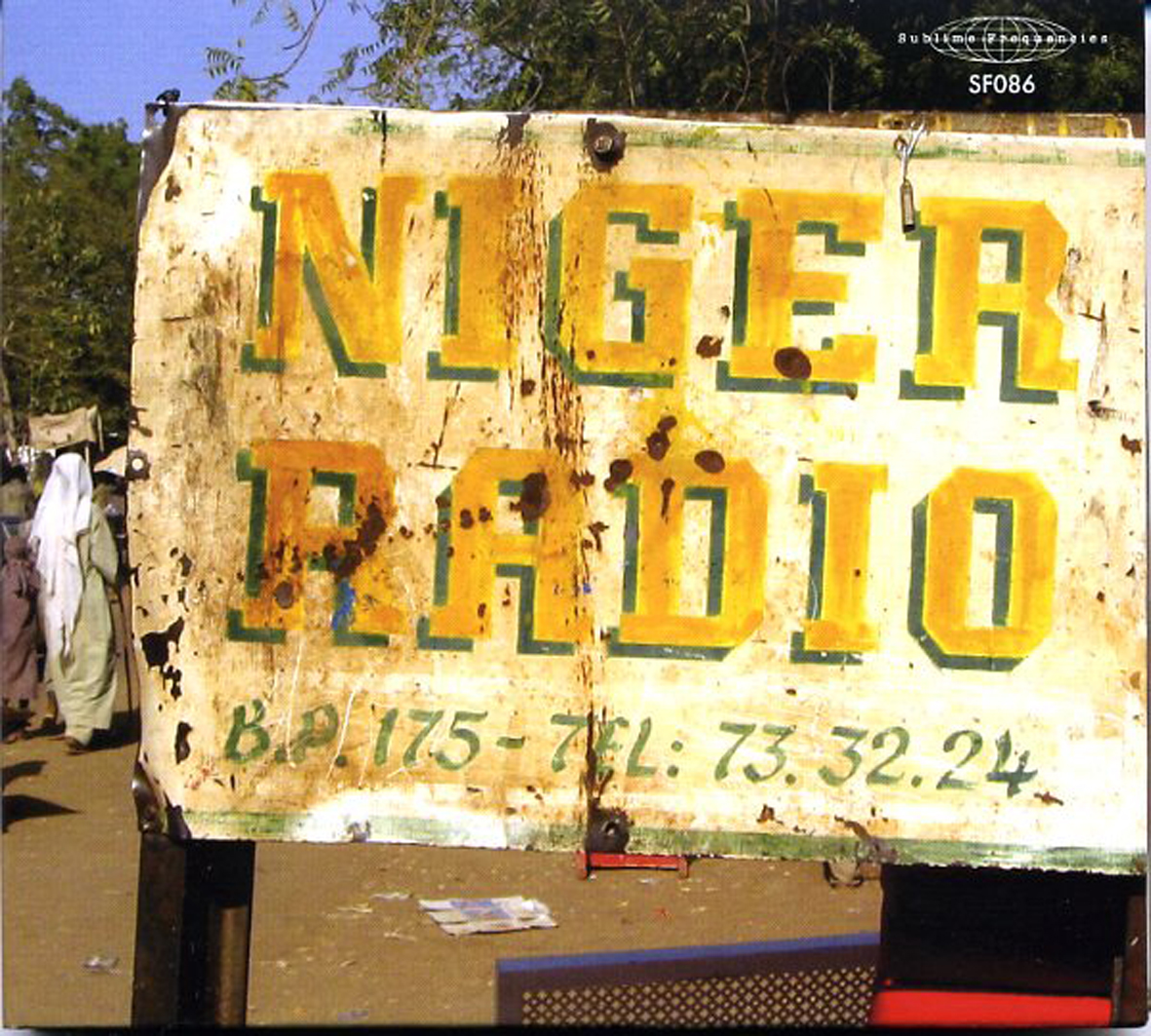 While there are many fine reasons to love Sublime Frequencies, their latest album highlights a personal favorite: their unwavering willingness to release superficially absurd, financially doomed, or utterly uncategorizable projects solely because they are interesting and unique.  Also, the fact that they are an established label means that something like this (a random-seeming collage of radio snippets recorded almost a decade ago) needs to be treated with considerably more critical thought and openness than it normally would be.  It certainly still sounds like a random collage of radio snippets, mind you, but the intent is deeper and more noble than that.
While there are many fine reasons to love Sublime Frequencies, their latest album highlights a personal favorite: their unwavering willingness to release superficially absurd, financially doomed, or utterly uncategorizable projects solely because they are interesting and unique.  Also, the fact that they are an established label means that something like this (a random-seeming collage of radio snippets recorded almost a decade ago) needs to be treated with considerably more critical thought and openness than it normally would be.  It certainly still sounds like a random collage of radio snippets, mind you, but the intent is deeper and more noble than that.
As it happens, the idea of hanging around in a distant country aimlessly spinning a radio dial to hear what sort of unfamiliar things come out actually sounds quite appealing to me.  If I did it, however, I would never in a million years think of releasing those recordings as an album.  The primary reason for that is simple: literally anyone could have done this, as Hisham Mayet's recordings are deliberately artless.  He was not harvesting strange sounds for some planned surrealist collage nor is this any sort of ethnographic sonic travelogue, unless he was trying to replicate a cab ride with an easily bored driver.  Secondly, I would feel like any Nigériens that I told about the project would look at me like I was an utter fool, while Westerners would probably pillory me for shameless cultural voyeurism ("Check it out–I went somewhere foreign and made a tape of all the foreign people talking all foreign!  Aren't they crazy-sounding?").
Fortunately, Mayet's liner notes do an excellent job of explaining the purpose, context, and content of this release.  Essentially, Radio Niger is a snapshot of what radio should and could be: a vibrant, unpredictable medium that gives a meaningful voice to all kinds of disparate communities and facets of the artistic spectrum.  While there are admittedly a handful of similar bastions remaining in the US (such as WFMU), American terrestrial radio has generally been a joyless, soulless, and irrelevant wasteland of homogeneity for a very long time.  Also, American free-form radio is largely the province of the very hip, whereas Radio Niger is a far more broad-reaching and inclusive phenomenon where many different languages, cultures, and socio-economic strata happily collide.  The sheer scope of content covered on this album is staggering–once I had a more complete idea of what I was hearing, anyway.  There are probably not many other places on earth where "avant-collage cutups" coexist with BBC news broadcasts, disposable Auto-Tuned contemporary pop, Taureg blues, drunken storytellers, Koranic transmissions, and animist folk songs.
Unfortunately, I do not speak fluent Hausa, Zarma, Tamajeq, or even French, which leads to one of Radio Niger's few regrettable, but inherent, flaws: few will understand the actual content of this album, so it unavoidably still sounds like someone scanning through a radio.  Some of the snatches of songs are quite good, certainly, but they are always incomplete and there is seemingly no way to find out anything about them.  My other issue is that–contentwise, at least–this seems like it should be a free or inexpensive download rather than a full-priced CD.  However, releasing this as a context-free sound file would completely defeat its purpose.  Also, treating Radio Niger like a "real album" gives it the sense of significance that it deserves.  My sole real caveat then is this: this is not the place to go for anyone looking to be turned onto some cool Nigérien bands.  It is, however, a thoughtfully assembled love letter to free-form radio that also happens to double as a fun and enjoyable collage
Samples:
 
Read More
- Administrator
- Albums and Singles
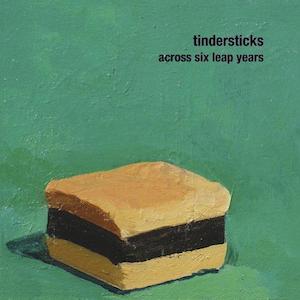 In their 21st year, Tindersticks have decided to celebrate with two new albums. Across Six Leap Years, a retrospective of sorts, sees them revisiting older material with their current line up and the other is a radical departure as they soundtrack Les Salauds (another Claire Denis film). The soundtrack is the clear winner here but Across Six Leap Years has its moments too.
In their 21st year, Tindersticks have decided to celebrate with two new albums. Across Six Leap Years, a retrospective of sorts, sees them revisiting older material with their current line up and the other is a radical departure as they soundtrack Les Salauds (another Claire Denis film). The soundtrack is the clear winner here but Across Six Leap Years has its moments too.
When the band announced their plans to go into Abbey Road and re-record selected songs from their back catalog, I had the idea that they would take familiar favorites and reinterpret them in surprising or interesting ways. I tried to imagine what songs they would pick: "City Sickness," "Tiny Tears," "CF FG" and "Bathtime" all seemed like sure choices to me or maybe a couple of songs off each of the early albums? What I did not expect was for two songs from Stuart Staples’ solo album Lucky Dog Recordings 03-04 to kick off the album.
This album never grabbed me at the time; it seemed like a sad echo of Tindersticks who I had presumed to be done at that time. Staples has since stated that some of those songs were written for Tindersticks before they split and that they were never given the home they really needed. However, the group’s rendition of "Friday Night" does little to improve the song which still sounds fairly dead in comparison to Tindersticks even on an off day. I have grim feelings where this is going, especially since I do not remember liking the song "Marseilles Sunshine" much. Yet, I am surprised to find that it is given a new lease of life here. Poised and delicate, this is prime Tindersticks that would be comfortable on an album like Curtains or Simple Pleasure.
From here on, the group picks songs from the main Tindersticks songbook but it is an odd selection to say the least. The first album is ignored though they do include three songs from their second album: "A Night In," "Sleepy Song," and "She’s Gone." Unfortunately, none of the versions here top the originals. Only it is possible to hear the changes in Staples’ voice in the intervening 20 years, these could be alternative takes from the original sessions. The exception is "Sleepy Song," which was also recorded in one take in Abbey Road in 1994 with the band arranged around a single microphone and that version which closes their second album has a magic that cannot be replicated, the new take is a bit lacklustre when listened to after the original. The songs are still good but it seems like a waste of studio time now especially considering there are terrific versions of all these songs available as a free download on the official Tindersticks site (from when they performed the second album for ATP’s Don’t Look Back series of concerts).
What strikes me particularly about Across Six Leap Years is how dreary the track selection is. Occasionally the livelier side of the group comes across but I would hesitate to recommend this album to anyone but the most die hard fan as it is a trudge to listen to. Where are the likes of "Her," "For Those," "Black Smoke" or 'Rented Rooms"? Sure there is a good interpretation of "Say Goodbye to the City" but given that they have been storming through the same song on their recent tour, it sounds like they were holding back and playing it safe here.
samples:
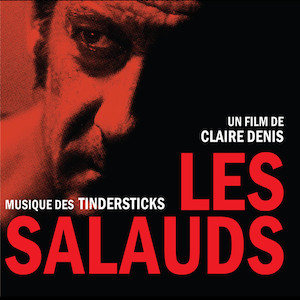
Playing it safe is not something that could be said about Les Salauds. For all the toeing the line that Tindersticks do on Across Six Leap Years, the line is well and truly erased for this soundtrack. Brooding and dark, here the band’s usual style and instruments are traded in for electronic gurgles and treated vocals. This shift would be a real shock if Stuart Staples did not name check Cabaret Voltaire’s "Nag Nag Nag" on the band’s website or if the band had not covered Psychic TV as a B-side a couple of years ago, though even with this information in mind Les Salauds seems to come out of nowhere.
The pitch-black mood is unsurprising given the details on the film’s IMDB page (as usual with my reviews of film soundtracks, I have still to get around to watching Les Salauds): suicide, rape, revenge. Yet, there is a tenderness hear despite the weighty themes of the film. Much like their score to Denis’s excellent but extreme sex cannibal drama Trouble Every Day (by far and away my favourite Tindersticks song, it should have been included on Across Six Leap Years), the group do not just regurgitate the clichés and tropes of genre movie scores. Opening the album, "Put Your Love in Me (Fade)" is immediately striking in its form: a pulsing rhythm and electronic drum beat form a muscular centre for Staples’ voice to weave around. Even the familiar sound of his voice is strange, an echoed effect makes him sound like some sort of androgynous ghost. When he sings "I wanna be in heaven!" it sounds like the mournful cry of a soul trapped in limbo.
"Opening" (perhaps unsurprisingly) introduces the melodic themes that run through the soundtracks; an icy synthesiser playing long and sad tones (think the bleakest parts of Joy Division’s Closer) and minimal but powerful electric piano forcing through the darkness. These two elements—the synth and the piano—re-emerge throughout the album like lone shadows stalking the listener. Despite the simplicity of the pieces, they create whole narrative worlds based on the titles alone. The haunted emptiness of "Elevator" and "Low Life" generate enough atmosphere to have the power of a good short story or evocative photograph (those ones that stick with you for years after you have read or seen them). The fact that a film exists to go with these pieces is incidental, Les Salauds works brilliantly on its own terms.
Les Salauds reaches an intense climax with "Night Drive," where all the elements that make the rest of the album so atmospheric are ramped up to a dizzying peak. I cannot actually conceive of whatever scene it is meant to accompany fully matching the frenetic power of "Night Drive" but I am eager to find out. By the time the track finishes and the second (and much longer) version of "Put Your Love in Me" comes on, the tension has come to the point where instead of being a release, it intensifies the paranoia and unease at the centre of the song. This leap into the depths of emotion and experimentation is a far better celebration of the group’s continued existence than the rehash of old songs presented on Across Six Leap Years and with any luck, Les Salauds is a portent of another 21 years of fantastic music.
samples:
 
Read More
- Administrator
- Albums and Singles

Artist: Deadwood
Title: Sheolic
Catalogue No: CSR163CD
Barcode: 5060174955396
Format: CD in jewelcase
Genre: Black Industrial / Dark Ambient
Shipping: 17th February
Sample: Compound 4080
Normal 0 false false false MicrosoftInternetExplorer4
st1\:*{behavior:url(#ieooui) } /* Style Definitions */ table.MsoNormalTable {mso-style-name:"Table Normal"; mso-tstyle-rowband-size:0; mso-tstyle-colband-size:0; mso-style-noshow:yes; mso-style-parent:""; mso-padding-alt:0cm 5.4pt 0cm 5.4pt; mso-para-margin:0cm; mso-para-margin-bottom:.0001pt; mso-pagination:widow-orphan; font-size:10.0pt; font-family:"Times New Roman"; mso-ansi-language:#0400; mso-fareast-language:#0400; mso-bidi-language:#0400;}
The desolate new album from Sweden’s Deadwood (aka Daniel Jansson of CULTED). Recorded 2009-2011, “Sheolic” mixes dark ambient with black Industrial and power electronics, making this the bleakest Deadwood album to date. Cold, distorted waves of nefarious electronics, putrescent vocals and dense, heavy rhythms take you to a new sub-level of despair that delivers on many plains of consciousness. Influenced by the downfall of mankind and the men and women that willingly embrace it; from religious cults to those who choose to act on their own. This is the final part of the Deadwood trilogy for Cold Spring – beginning with “8 19″ in 2005, continuing with “Ramblack” in 2008, and finishing with “Sheolic” in 2014. Cover art by Laetitia Mantis.
Tracks: 1. A.V.E / 2. Pulverization Pulse / 3. Compound 4080 / 4. Dead Waste / 5. Traditorem / 6. Dissolution Paradigm / 7. Malum In Se
Read More
- Administrator
- Albums and Singles

Artist: Mesektet
Title: Towards A Bleak Sun
Catalogue No: CSR191CD
Barcode: 5060174956775
Format: CD in jewelcase
Genre: Dark Ambient / Drone / Ritual
Shipping: 17th February
Sample: Hollow Monoliths
Ancient Egypt inspired, monolithic drone/dark ambient. Mesektet created rumbling earth drones that echo through caverns and temples. Vast swathes of ominous drones, primordial vibrations, and ceremonial ambience take you on an immersive journey to the Netherworld. The name ‘Mesektet’ comes from one of the two boats which the Egyptian solar deity Ra travelled in: Mandjet was his ‘morning boat’, and Mesektet the ‘evening boat’. Ra used Mesektet as a boat to travel back to the Netherworld from a long day of shining. The deity’s travels were an inspiration for the essence and rich sound of “Towards a Bleak Sun”. Six lengthy tracks (46 minutes) composed as a soundtrack for the deep pyramids and long travels to the Netherworld.
Tracks: 1. Aken / 2. Silent Giants / 3. Sea Of Dust / 4. Burial Of The Sun / 5. Hollow Monoliths / 6. Forgotten Tomb
Read More
- Administrator
- Albums and Singles
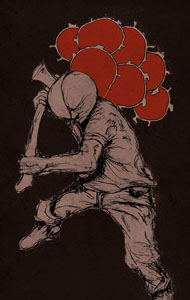 Compiling songs from various self-released cassettes, Selected Works I: Still Suns features a selection of Christian Dubé's work from between 2008 and 2011. Working heavily with cheap and damaged equipment, Rei Rea’s sound seems steeped most heavily in the noise world, with some more rhythmic elements slipping in to keep things original in an overpopulated genre.
Compiling songs from various self-released cassettes, Selected Works I: Still Suns features a selection of Christian Dubé's work from between 2008 and 2011. Working heavily with cheap and damaged equipment, Rei Rea’s sound seems steeped most heavily in the noise world, with some more rhythmic elements slipping in to keep things original in an overpopulated genre.
When "Duchess" first started, I was not sure what to expect from the tape, with an over-driven surge that borrowed as much from the intentionally low fidelity world of black metal as it did to the redlining bass and feedback of contemporary power electronics.Even when what at least resembled some sort of heavily processed, demonic voice samples dropped in to darken everything even more, it still was sitting somewhere on the fence between those two (admittedly related) genres.
As the tape played on, I found more in league with the electronics and industrial side of things, which is more my speed anyway.The quivering noise layers and shuffling, creeping pace of "Deader" instantly reminded me of Mind Control-era Genocide Organ, and even more so once the floor rattling kick drum sets in.While maybe not quite as closely, but the rhythmic synth pulse and slow burn of "Tres Mal" has the same feel throughout it.
The remainder is less specifically identifiable but shows influence from the early days of both industrial and harsh noise.The muffled, disjointed drum machine of "Throne of Papa" when paired with the out of tune distorted synth is not all that removed from the classic SPK works, and the distorted vacuum cleaner and junk metal banging of "Caco" comes across equally Test Dept and Merzbow in its approach."Rain Plaine" presents an overall more open, ambient feel to it, but what could be an ugly, noisy bit of brass instrumentation and crashes of noise keeps it from being placid in any way.
Other pieces have Dubé reigning the aggression just a bit and going in a somewhat different direction.The short "Slow Ipex" has the same lo-fi din as the rest of the compilation does, but grimy, shimmering tones and textures shine through here and there, giving it a slightly less ugly and oppressive feel.The distorted guitar of "Omal" might be a bit nastier in its sound, but the remainder of the piece is also more expansive and reflective.
Rei Rea is pretty damn prolific as best as I can tell, so this compilation functions as an ideal jumping in point. Looking at the multitude of releases he has issued since 2005, I do wonder how the quality control is overall, but the eight pieces compiled here are exemplary in their structuring and composition.Still Suns has just the right amount of noise and dissonance, but enough form and organization to give it a distinct identity.
samples:
 
Read More
- Administrator
- Albums and Singles
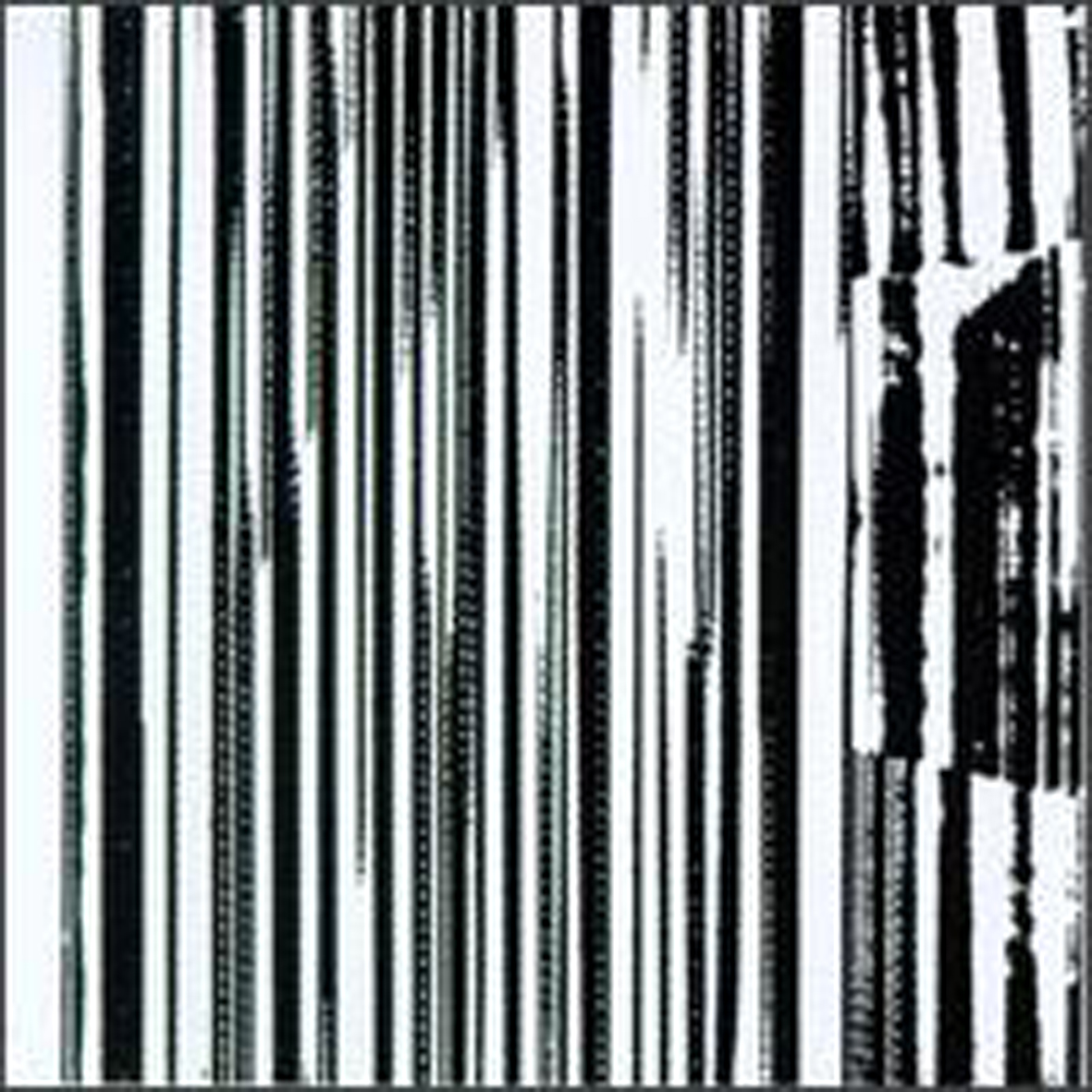 This 1992 double LP has historically been regarded to be The Dead C's zenith, though contention for that particular honor has gotten quite a bit more crowded with some of their more recent efforts.  In any case, there are certainly a few excellent songs and flashes of outsider brilliance amidst all the stumbling, shambling chaos and gleefully deliberate self-sabotage.  The flaws are a large part of the charm though–lots of people write good songs, but no one else has maintained this degree of playful, yet unwavering insouciance for quite as long as this New Zealand trio has (nor would they presumably want to).  That inexplicable persistence is its own artistic triumph though and this album is the most towering monument to it.
This 1992 double LP has historically been regarded to be The Dead C's zenith, though contention for that particular honor has gotten quite a bit more crowded with some of their more recent efforts.  In any case, there are certainly a few excellent songs and flashes of outsider brilliance amidst all the stumbling, shambling chaos and gleefully deliberate self-sabotage.  The flaws are a large part of the charm though–lots of people write good songs, but no one else has maintained this degree of playful, yet unwavering insouciance for quite as long as this New Zealand trio has (nor would they presumably want to).  That inexplicable persistence is its own artistic triumph though and this album is the most towering monument to it.
In classic self-defeating Dead C fashion, Harsh 70's Reality opens with over 20 minutes of abstract guitar noise in "Driver UFO."  Not a firestorm of dynamic Sonic Youth-style squall, mind you; just a buzzing, sizzling, and roiling ocean of feedback punctuated with occasional stabs of clanging strums or a rare deliberately played note.  Gradually it gives way to some indifferently played one-finger Farfisa drones that seem to randomly stop at times, before giving way yet again to a non-crescendo of still more strangled feedback.  Admittedly, some of the guitar noises are sporadically very cool (especially when they sound like a large dying animal), but "Driver UFO" is most successful as both a provocation and a statement of intent: it filled the entire A side of the initial vinyl release, forcing hapless first-time listeners to listen to the entire interminable thing in doomed expectation that it would eventually cohere into something more, which it never does.
Of course, the genius of The Dead C lies in their ambiguity and unpredictability, as the line separating "brilliant rock deconstruction" and "improvised, tossed-off mess" is particularly blurry with them.  While a lot of their work is admittedly lo-fi, half-assed chaos, they do occasionally get things gloriously right.  The first hint that there might be something more to this album comes with the surprisingly propulsive second song "Sky," which is basically sludgy two-chord punk rock enhanced by moaning and squawking feedback and drumming that sounds like it is constantly on the verge of losing the beat or accidentally changing the time signature (which is presumably intentional, as Robbie Yeats has spent time in, uh, more traditionally competent bands like The Verlaines).  Also, the lyrics, when decipherable, are simultaneously cryptic, defiant, and vaguely menacing (at least from their tone).
"Sky" is followed by the epic "Love," which is one of the best Dead C songs ever and the primary reason why this album is worth owning.  It is built upon a lazily strummed, brooding, and murky two-chord progression, which would normally be quite a bit of structure for a Dead C song, but it is initially undercut by a noisy, wandering guitar solo, odd stops and starts, and unnervingly arbitrary snare hits.  After about three minutes, however, Michael Morley (I think) steps up to the mic and starts creepily repeating variations of the phrase "and you talk about the rules" with unexpected intensity.  From then on, "Love" is basically 9 minutes of slow-burning, ebbing-and-flowing bad-ass noise rock perfection, as either Morley or Bruce Russell unleashes a prolonged meandering guitar solo that resembles nothing less than a demon-possessed Neil Young on quaaludes...which is exactly the sort of amazing experience that I can only get from The Dead C.
The other major song on the album is the similarly lengthy closer "Hope," which is equal parts great and maddeningly exasperating.  Built upon just one insistently played dissonant chord, mumbled vocals, and an accompaniment of cool echoey guitar noises, it sounds like one of the best songs that Jandek never wrote...for a while, anyway.  Then around the halfway point, it explodes into an awkward crescendo and also sounds like it is suddenly being recorded live in a loud club, which is disorienting to say the least.  Then it ends, then comes back...without any crowd noise at all.  I think the crowd noise might actually be a tape, as it sounds just as loud as the music and it also seems like quite a lot of happy people chatting, which seems like a very implausible thing to be happening during an incredibly bleak song by an incredibly obscure band (at the time, anyway).
The rest of the album is the proverbial "mixed bag," as there is quite a bit of lo-fi, treble-heavy messiness strewn about.  I like the brief "Suffer Bomb Damage" a lot though, which combines a forlorn Farfisa non-melody with the jagged, murky scrape of a single insistently strummed chord.  The smoldering "Baseheart" is another strong moment, as feedback and gnarled guitar slashes buffet a sludgy bass throb and unexpectedly decipherable and consistent vocals.  The lesser songs are not exactly filler though, as they all nicely augment the mood of dark, anything-can-happen nihilism that pervades the album.
The version of Harsh 70's Reality that I have is the 1998 reissue, which omits two songs from the original LPs: "Shark" and "T. is Never Over I & II."  Both were restored, however, for Siltbreeze's "remastered" 2012 reissue (I cannot detect any improvement in the band's willfully messy sound, nor would I necessarily want it to be improved in the first place).  "T. is Never Over" is an fairly inessential bit of smoldering guitar wreckage that later turned up on the Vain, Erudite, and Stupid compilation.  "Shark" is quite a compellingly ridiculous piece though, combining sloppy guitar noodling with a pitch-shifted voice recording and spirited "polka beat" drumming that sounds perpetually on the verge of careening out of control (a recurring Dead C highlight, I suppose).
Notably, I have seen Harsh 70's Reality periodically hailed as both a masterpiece and one of the single best albums of the '90s, claims that seem absolutely insane if I base my judgment solely on the quality of the songs.  I suppose it is kind of a masterpiece in some less tangible sense, however, as it is an absolute monolith of sprawling, willful wrongness that practically dares people to try and like it.  Though that attitude certainly appeals to me, I suspect that folks who are less amused by brazen contrarianism than I am will find little to warm to here aside from the absolutely stellar "Love."  There are certainly more song-based, accessible Dead C albums out there to be enjoyed for those who want them, but this is the ideal destination for those looking for something a bit different: a prolonged wallow in the messy, smoldering ruins of rock music.
 
Read More
- Administrator
- Albums and Singles
 Well, I can honestly say that I have never heard another album quite like this one and I presumably never will again, as Soak is an extremely deranged and over-the-top effort—even by Foetus' inflated standards.  That does not necessarily mean that I like it, but I cannot help but admire its complexity, variety, epic scope, and sheer operatic bombast.  In fact, I am quite sure that potential likability was the furthest thing from Thirlwell's mind during these recordings, as Soak resembles nothing less than a mad genius with seemingly unlimited imagination, time, and resources concocting the most kaleidoscopic lunacy possible simply because he can.  We get to hear it, but this is clearly an album that Thirlwell made with himself as the target audience.
Well, I can honestly say that I have never heard another album quite like this one and I presumably never will again, as Soak is an extremely deranged and over-the-top effort—even by Foetus' inflated standards.  That does not necessarily mean that I like it, but I cannot help but admire its complexity, variety, epic scope, and sheer operatic bombast.  In fact, I am quite sure that potential likability was the furthest thing from Thirlwell's mind during these recordings, as Soak resembles nothing less than a mad genius with seemingly unlimited imagination, time, and resources concocting the most kaleidoscopic lunacy possible simply because he can.  We get to hear it, but this is clearly an album that Thirlwell made with himself as the target audience.
Soak is billed as both a successor and a companion album to 2010's Hide, as several pieces were either begun around the same time or expand upon similar themes (like opera, for example).  It is also a bit of a bizarre grab bag, however, as it takes some very unexpected detours after its absolutely apocalyptic opening.  That opening is more than enough to make this an album worth hearing though, as the one-two punch of "Red And Black And Gray And White" and "Pratheism" is hard to top as far as sheer, overwhelming "what the hell is happening?!?" bewilderment is concerned.  "Red and Black" for example, sounds like a red-hot jazz combo with a crazily virtuousic drummer absolutely tearing it up at strip club...mingled with a military march chant...and lyrics like "don't mess with my copyright!"
"Pratheism," on the other hand, brings back Thirlwell's recent opera fascination in the most epic, garish way possible.  While it is only about five minutes long, it basically manages to sound like the whole world is ending.  Also, it features some very non-opera touches like rock drumming and recognizable synth textures.  I have absolutely no idea what to make of it at all, as it is just too crazy and head-explodingly over-the-top to even process.  Anything resembling taste or subtlety is absolutely out the window.  In fact, it is so brazen and unapologetic in its excess that it would probably make even Andrew Lloyd Webber or the most clueless of prog rockers blanch and look uncomfortable ("Uh, great job, Jim...but don't you think it might be a little...um...too much?").
The cavalcade of jaw-dropping excess slackens a bit after that (how could it not?), but returns with a vengeance later with a deranged horror-movie-soundtrack-meets-rock-opera cover of The Normal's classic "Warm Leatherette" and a Secret Chiefs 3 remix of Hide's "Cosmetics."  Again, any sort of qualitative assessment is rendered impossible by my sheer, stunned disbelief.  "Cosmetics" basically reprises the "ear-melting supernova" approach of "Pratheism" in even more extreme fashion, while Daniel Miller's minimalist, robotic synth gem is almost unrecognizably transformed into something that sounds like it belongs in a battle scene from Lord of the Rings.
The madness continues elsewhere in different form, as this already complicated, schizophrenic album is complicated still further by the glaringly aberrant McCartney-esque pop of "Kamikaze," which is made still stranger by the slight sneer of the vocals; the lush, classic Hollywood film strings; and the hard rock stomp of the crescendo.  Yet another odd moment is a cover of Nino Ferrer's suave "La Rua Madureira," which starts off fairly faithful to the original, but becomes increasingly hallucinatory and carnivalesque before ultimately sounding like a fake John Williams score for an imaginary Middle Eastern epic.
In keeping with the dual themes of "film scores" and "mad eclecticism," Thirlwell also covers John Carpenter's theme to Halloween in a predictably insane techno-damaged maximalist way (and throws in a vocoder and some operatic vocals to boot).  Yet again, I am left both blown away and scratching my head.  As for the remaining songs, they basically offer more of same bizarre high-brow/low-brow/cartoonish excess collisions already described, though they are a bit less memorable.  Thirlwell does let up the onslaught just long enough, however, for one delicate, creepy ballad ("Alabaster") to sneak in.
When all is said and done, I am left with exactly two thoughts about Soak.  The first is this: Jim Thirlwell is at the absolute height of his powers as both a composer and a producer right now and can seemingly do anything...and chooses to do exactly that... then chooses to do it in the most extreme possible way.  It fact, the fractured, jarring eclecticism of it all calls to mind a grotesque, demonic caricature of the loopy, anything-goes LAMFS scene.  Secondly, this is about as difficult and uncompromising as music can get, which is kind of amazing: Jim is a successful, established composer at this point, yet he continues to make music every bit as "outsider" as someone like Jandek.  In any case, whatever the hell it is that Thirlwell did here is legitimately amazing.  It definitely is not for me (at all), but it is undeniably a work of stunning force and originality nonetheless.
Samples:
 
 
Read More
- Administrator
- Albums and Singles
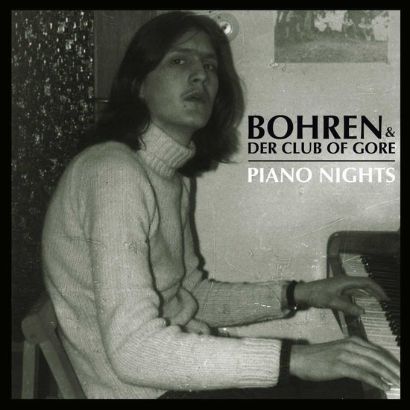 An album with a name like Piano Nights immediately calls to mind a dour and downtrodden moment in a group's catalog. Bohren & Der Club Of Gore, however, thrive in the long and patient spaces between beats, where they eke out a brooding stagnant blend of drone and jazz, so melancholy is not exactly a new mood for them to explore. Strangely enough though, Piano Nights is probably more cathartic than their usual material. They make purgatory lounge music this time, as opposed to waltzing around in hell itself.
An album with a name like Piano Nights immediately calls to mind a dour and downtrodden moment in a group's catalog. Bohren & Der Club Of Gore, however, thrive in the long and patient spaces between beats, where they eke out a brooding stagnant blend of drone and jazz, so melancholy is not exactly a new mood for them to explore. Strangely enough though, Piano Nights is probably more cathartic than their usual material. They make purgatory lounge music this time, as opposed to waltzing around in hell itself.
Often remarked on as the spiritual successor to the jazz scores of Angelo Badalamenti, there is no one currently so prolifically macabre as Bohren; so pregnant with emotion and ready to conjure up the appropriate images of checkered floors and red velvet curtains. Inspired by a Moscow performance where pianist Chrisoph Closer performed some of their older songs on piano, Piano Nights lends a lot of its weight to the titular instrument. Each song on this record draws out its lounge-y harmonies to the psychological extreme, withholding change right up to the point where a pressed hi-hat or a rattled cymbal signal some great sigh of relief. The piano arrangements are heard in a number of different iterations, some electric and some organic, but the strength and breadth of the sounds produced on this record are all held together by the inimitable plod of a baby grand, softly heartbreaking its way through each moribund composition.
"Fahr zur Hölle" plays with haunting organ and "Segeln ohne Wind" hits some oddly dissonant harmonics suggesting dark ambient music, but for the most part much of this album is indistinguishable between songs. "Verloren (Alles)" expands on a few ideas with the best successes, due to its length and arc. It is still fairly similar to the rest of the record, but when every moment is so calculated, playing anything more complicated than an eighth note seems revelatory and divisive. What is probably most jarring about this album is its relative pleasantness; Piano Nights seems to be one of Bohren's more uplifting suites when contrasted against past releases like Sunset Mission and Black Earth, pressing the limits of jazz versus ambient music in a way that makes the music sweeter and sadder but also lighter. It is an inessential release in that a lot of Bohren's music does not focus on progress or development, but it is as fine a record as they have ever put out.
Samples:
 
Read More
- Administrator
- Albums and Singles
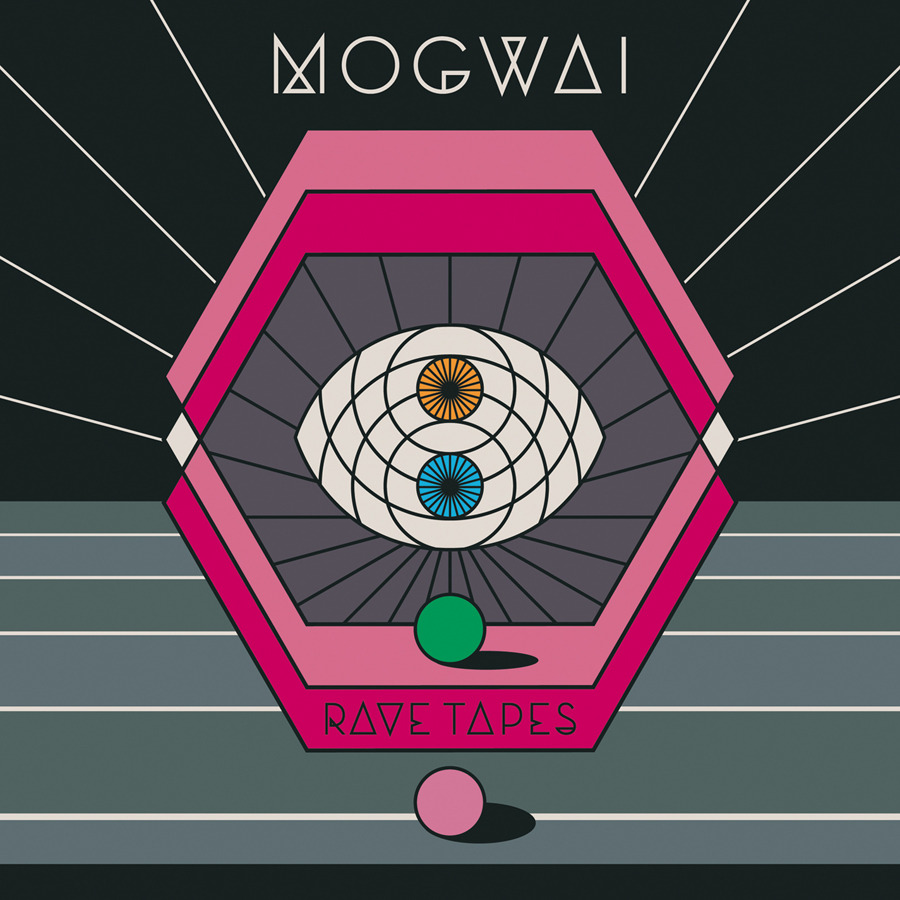
Fans and detractors alike would probably agree that a defining characteristic of Mogwai's last few records has been the symbolic spinning of wheels. It is disappointing, then, that the band would deem the best course of action is to frame the spinning wheels as a deliberate move to concretize a style and not the lack of inspiration everyone knows it to be. Rave Tapes was promoted as having an abundance of electronic instrumentation, but that is a disingenuous move, both because it is neither a new element nor is it nearly as prominent as it is suggested. Rather, it is the only distinguishing feature of a release interred in its own indifference.
What I didn't need to hear from Mogwai was them trudging through another middling instrumental workout as if the exhaustion of syncing these analog synthesizers to the BPM they wanted drained whatever life force was left for writing melodies. No one should be championed for landing on beat a full four minutes or accomplishing rudimentary layering. "Simon Ferocious" is the most pragmatically energetic of the songs on Rave Tapes, and even then the guitar soloing in the last minutes seems forced. "Remurdered" pulls the same kind of reluctant synth arpeggio exercise to slightly improved results, with a low-pitched analog saw wave carrying the momentum that Mogwai forgot was important on much of the later songs. "Repelish" plays the spoken word trope card to save a dying melody, while "Deesh" clings to anthemic buildups that cannot find a point. The rest do some variation of the same slow burn post-rock thing that has been in vogue and simultaneously kind of played out ever since it existed. "Blues Hour" and "The Lord Is Out Of Control" plug some sheepish vocals in between choruses for a change, standing out only among such odd bland company.
It is a credit to Mogwai's innovation that in their prime and even occasionally past it they have been able to take the typically sedative processes of guitar-driven post-rock to interesting places, and it is probably not a surprise that such a perfect storm of inspiration as seen onYoung Team is a rarer thing than they would like it to be. Still, the shifting averages of quality material on albums like Rave Tapes are doing a shame to the good work they have contributed in the past. Mogwai cannot be running to the studio to record every time they purchase a Juno; they owe it to themselves and their reputation to simply try harder than this.
Samples:
 
Read More
- Administrator
- Albums and Singles
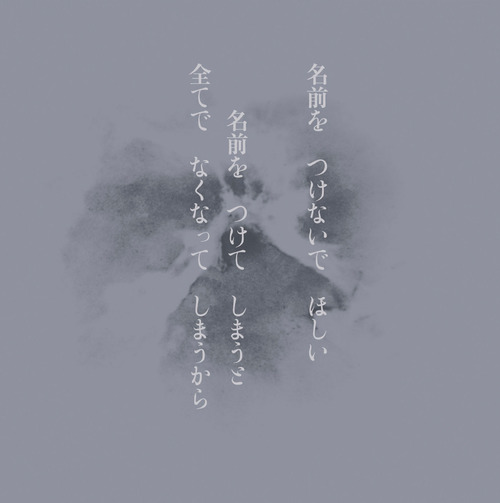 When Keiji Haino reignited the fires at the center of Fushitsusha that had lain dormant for about a decade, it was inevitable that a change of focus would occur in the group’s music. Two albums recorded for Heartfast in 2012 saw the gaping chasms of noisy rock dropped for something more angular and rhythmically challenging. A third album was promised but, Haino being Haino, this has expanded the series further to become a tetralogy with these two releases.
When Keiji Haino reignited the fires at the center of Fushitsusha that had lain dormant for about a decade, it was inevitable that a change of focus would occur in the group’s music. Two albums recorded for Heartfast in 2012 saw the gaping chasms of noisy rock dropped for something more angular and rhythmically challenging. A third album was promised but, Haino being Haino, this has expanded the series further to become a tetralogy with these two releases.
 
Both discs were recorded at the same time with the latest line up of Fushitsusha with Ryosuke Kiyasu on drums and Kamekawa Chiyo on bass who have been touring with Haino for the last couple of years (the line up who recorded the 2012 albums seemed to have been left at home early on). As a result, Kiyasu and Chiyo have had time and experience to delve deep into Haino’s methods and this is evident from the recordings here. This Fushitsusha feels lean and powerful, gone are the nulling voids of previous line ups and instead the music is tight and punchy.
On 名前を つけないで ほしい 名前 つけて しまうと 全てで なくなって しまうから (Please don't name it. If you name it, it will cease to become all), the group run through five tracks in about 15 minutes which is practically punk rock speeds for Fushitsusha. Haino’s guitar is still wild but seems less aggressive than before and I would almost (stress almost) suggest that "なしくずし" is one of his more accessible songs in a long time. Though I would hasten to add that it is accessible in the same way as The Velvet Underground’s "I Heard Her Call My Name" is accessible. Things get a bit more adventurous on "はれつしろ (No.1)," where an older sort of Fushitsusha vibe is channeled. Haino manages to tear the temporal relationships between his singing and his guitar playing apart without once letting either aspect of his performance fall into step with what the rest of the group are doing.
The demanding time signatures explored during their last couple of tours pop up on songs like "なぞらない" and "ここにあるものは あっちにあるときは…" (the album’s one long song which makes up about half the disc’s run time). Here, Kiyasu and Chiyo head into what at first seems like free improvisation but quickly reveals itself to be highly controlled and exacting rhythmic patterns. It takes a few listens to get adjusted to what they are doing but, once my brain has acclimatised to it, it becomes quite hypnotic. In particular, "ここにあるものは あっちにあるときは…" has such a gentle and restrained approach that makes the unusual structure of the piece seem less alien. The barely-there music makes it more theatrical, bringing to mind the precision and strangeness of Samuel Beckett.
samples:
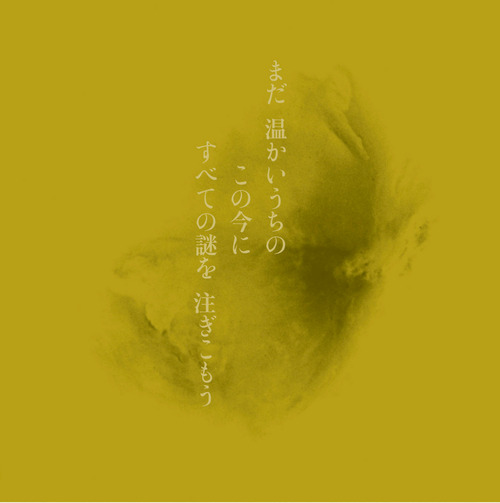 The second of these albums, まだ温かいうちの この今に 全ての謎を 注ぎ込んでしまおう (In the now, while it's still warm, let's pour in every mystery; the more observant reader might notice this is very similar in title to the latest Haino/Ambarchi/O’Rourke trio release) appears to be the same ideas explored from a different perspective. Two of the pieces have the same name (but numbered differently) with very little else in common. Given how Haino seemed to act as a conductor as much as a lead singer/guitarist during their show in Dublin a little while back, it would appear that these recordings might be the same philosophically even if the end results are different. "あいつの 名前をよぶな (No.2)" and "はれつしろ (No.2)" are both cut from the same cloth, a heavy prog feeling running through them as the three players all sound like they are playing a different freakout bit from three different 70s albums. It sounds tremendous.
The second of these albums, まだ温かいうちの この今に 全ての謎を 注ぎ込んでしまおう (In the now, while it's still warm, let's pour in every mystery; the more observant reader might notice this is very similar in title to the latest Haino/Ambarchi/O’Rourke trio release) appears to be the same ideas explored from a different perspective. Two of the pieces have the same name (but numbered differently) with very little else in common. Given how Haino seemed to act as a conductor as much as a lead singer/guitarist during their show in Dublin a little while back, it would appear that these recordings might be the same philosophically even if the end results are different. "あいつの 名前をよぶな (No.2)" and "はれつしろ (No.2)" are both cut from the same cloth, a heavy prog feeling running through them as the three players all sound like they are playing a different freakout bit from three different 70s albums. It sounds tremendous.
There is another change of direction on "ここになってしまう." They take a straight but distinctively non-rock rhythm (think Faust’s bit of their collaboration with Tony Conrad, Outside the Dream Syndicate) and on its skeletal frame, Haino hangs sparse vocals with a sense of detachment to match the music. However, the rest of the disc feels a little directionless; the out of time experimentation having run its course given that it was also present on the first album. Part of me feels that one great album could have been made out of the two sessions rather than a good and a not quite so good album. Perhaps part of my problem is that I have been listening to them back to back since I got them and should probably give them a bit of thinking space in between. In any case, a mediocre Fushitsusha album is worth ten albums by most other groups so once Haino keeps churning them out, I will be happy.
samples:
- ここになってしまう
- あいつの 名前をよぶな(No.2)
- さらに重くなってしまった罪
 
Read More